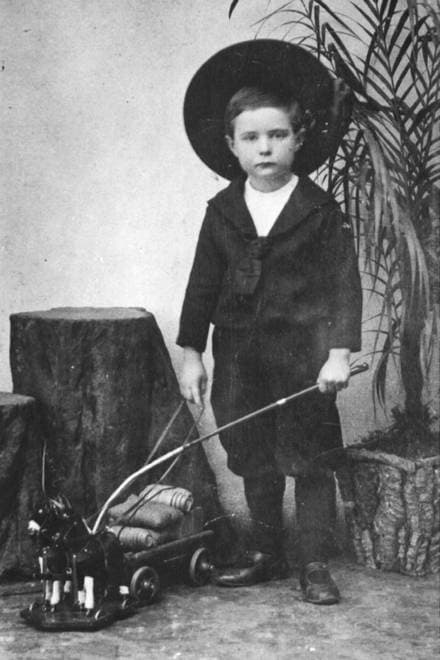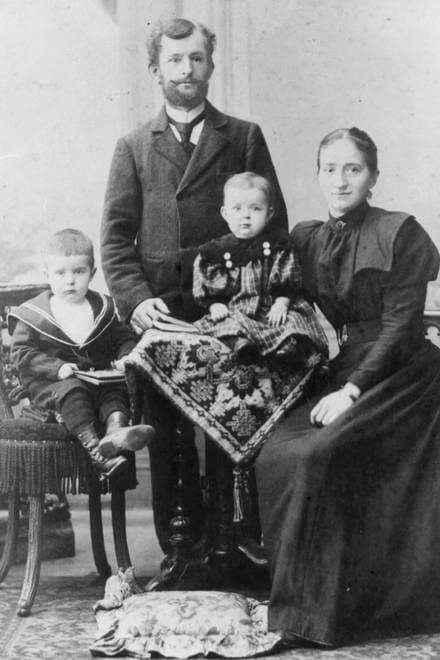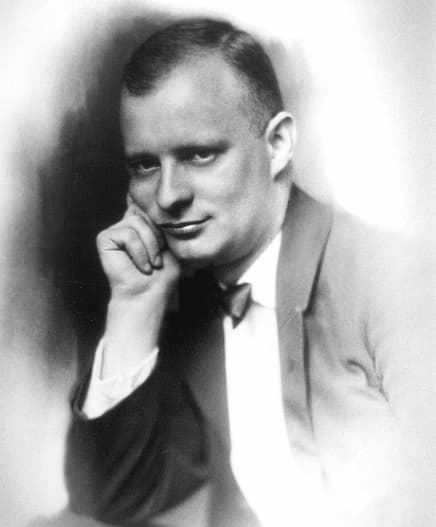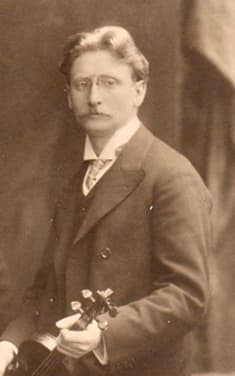Following the horrendous destruction caused by World War I, Germany was looking for a composer who spoke with a contemporary voice. Max Reger died in 1916, and neither Richard Strauss nor Hans Pfitzner had any real interest in New Music. As such, audiences were ready for Paul Hindemith, who found a receptive audience at the Donaueschingen Festival. In fact, Hindemith was able to quickly establish his position as the leading composer of the German avant-garde.
Paul Hindemith: String Quartet No. 1 in C Major, Op. 2 “Sehr lebhaft” (Amar Quartet)
Family Background

Paul Hindemith in 1901
Paul Hindemith was born on 16 November 1895 in Hanau, a small town near Frankfurt. His father, Robert Hindemith, came from a line of shopkeepers and craftsmen originating from a community in what is now Poland. His mother, Maria Sophie Warnecke, descended from a family of farmers and shepherds from Lower Saxony. His father was a music lover who supposedly ran away from home when his parents opposed his wish to become a musician.
Robert Hindemith eventually became a painter and decorator, but he was never able to provide a secure income for his family. The Hindemith family was constantly on the move, and Paul spent three years of his childhood with his paternal grandfather. The Hindemith scholar Giselher Schubert reports that “Paul was sincerely devoted to his mother, whom he is said to have resembled closely, even in similarity of gestures. In contrast, his relationship with his father was so negative that for a time, beginning in 1914, he severed all ties with him.
Paul Hindemith: Lustige Lieder in Aargauer Mundart, Op. 5 (Ruth Ziesak, soprano; Ulrich Eisenlohr, piano)
Childhood

Paul Hindemith with parents and sister Antonia
It has been reported that Robert Hindemith was intent on making his three children become professional musicians. Apparently, he subjected them to unrelenting musical training from early childhood. Paul learnt to play the violin, his sister Toni the piano, and his brother Rudolf the cello. Their father took the children on little concert tours, marketing them as the “Frankfurt Children’s Trio.” Robert accompanied his children on the zither and ruled his troupe with an iron fist.
Paul received local music lessons, and in 1907, he began his studies with the Swiss violinist Anna Hegner. Hegner quickly recognised Hindemith’s talents and arranged a meeting with her own teacher, Adolf Rebner. Rebner was concertmaster at the Frankfurt Opera, and he played first violin in a string quartet that bore his name. Since Rebner was also a violin professor at the Hoch Conservatory, he arranged for Hindemith to enroll free of charge.
Paul Hindemith: 8 Waltzes, Op. 6 “3 Wunderschöne Mädchen im Schwarzwald” (Filippo Farinelli, piano; Simone Nocchi, piano)
Mendelssohn and Sekles

Paul Hindemith, 1923
From his early days at the Conservatory, Hindemith had been dabbling in composition. Rebner insisted that Hindemith should focus on his violin studies, but with aid from wealthy Frankfurt families, Paul was able to add composition studies to his training at the Hoch Conservatory from 1912/13. His first composition teacher was Arnold Ludwig Mendelssohn, the son of Felix Mendelssohn’s cousin. Mendelssohn had been the director of church music and a professor in Darmstadt, and Hindemith held him in high esteem.
When Mendelssohn became ill, Hindemith became a student of Bernhard Sekles. While Mendelssohn had been a conservative musician, Sekles was a modernist who started the first jazz class anywhere at the Conservatory in 1928. He counted Rudi Stephan, Hans Rosbaud, Theodor Adorno, Ottmar Gerster, and others among his students. While studying with Sekles, Hindemith wrote his first works with opus numbers, works that, according to Giselher Schubert, “already exhibit considerable technical ability.”
Paul Hindemith: 3 Pieces for Cello and Piano, Op. 8, No. 2 “Phantasiestück”
Musical Pluralism

Adolf Rebner
Hindemith did not adhere to a particular compositional style or music in his early compositions. In fact, he freely borrowed and synthesised stylistic conventions taken from Brahms, Dvořák, Tchaikovsky, Mahler and Reger. Concurrently, his Drei Gesänge, Op. 9 for soprano and large orchestra, disclose the contemporary styles of Franz Schreker, Arnold Schoenberg, and Richard Strauss.
Hindemith composed in a variety of genres, including orchestral works, chamber works, solo piano pieces, songs, and even an opera. And he wrote, “I cannot give analyses of my works because I don’t know how to explain a piece of music in a few words (I would rather write a new one at the time.) Besides, I think that for people with ears, my things are perfectly easy to understand.”
For more of the best in classical music, sign up for our E-Newsletter
Paul Hindemith: 3 Songs, Op. 9 (Susan Bullock, soprano; BBC Philharmonic Orchestra; Yan Pascal Tortelier, cond.)


